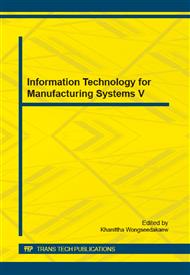p.540
p.549
p.554
p.560
p.567
p.573
p.582
p.587
p.594
Simulation and Optimization Design Based on Adams Engine Mounting System
Abstract:
The content of this subject research is to conduct optimization for engine mounting system, and through optimization, it can make the vibration between engine and vehicle body achieve a minimum, using Adams software for simulation. It studies the isolation vibration of the engine mounting system and conducts goal optimization for fixed frequency. This paper uses two methods for optimization. One is to use the rational allocation of fixed frequency to optimize the fixed frequency, and the other is to use energy decoupling method to optimize the fixed frequency. It uses Adams software for simulation of the optimized fixed frequency and conducts comparison of simulated results. The simulated results show that the optimized energy distribution situation almost achieves 90%. Compared with original data, decoupling degree also has a very great improvement, illustrating that the optimized data has greater effect for the isolated vibration of engine, in order to further verify the feasibility of optimization design method.
Info:
Periodical:
Pages:
567-572
Citation:
Online since:
October 2014
Authors:
Keywords:
Price:
Сopyright:
© 2014 Trans Tech Publications Ltd. All Rights Reserved
Share:
Citation:


